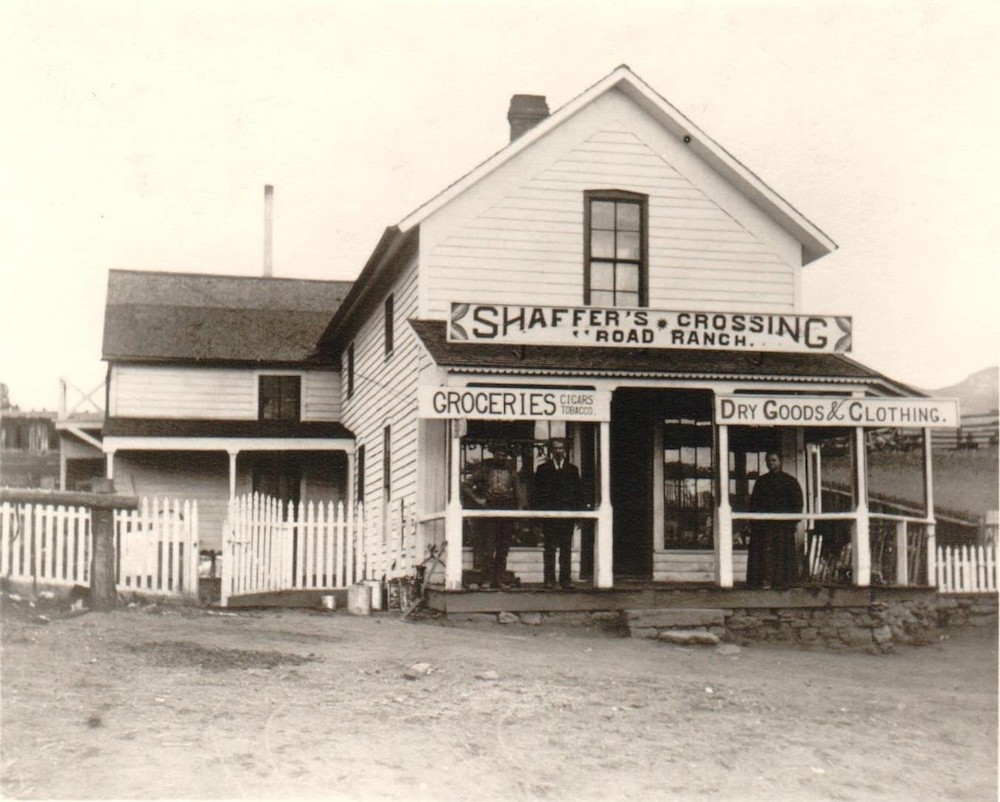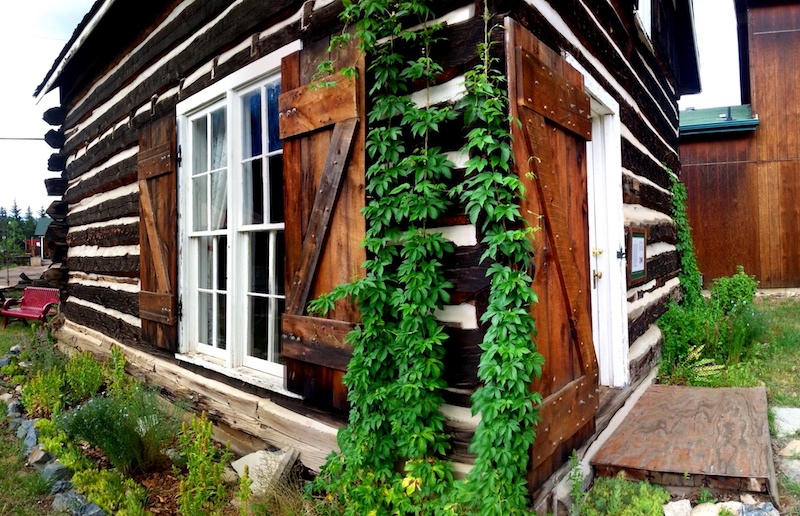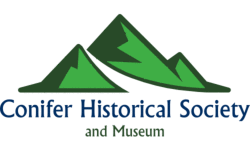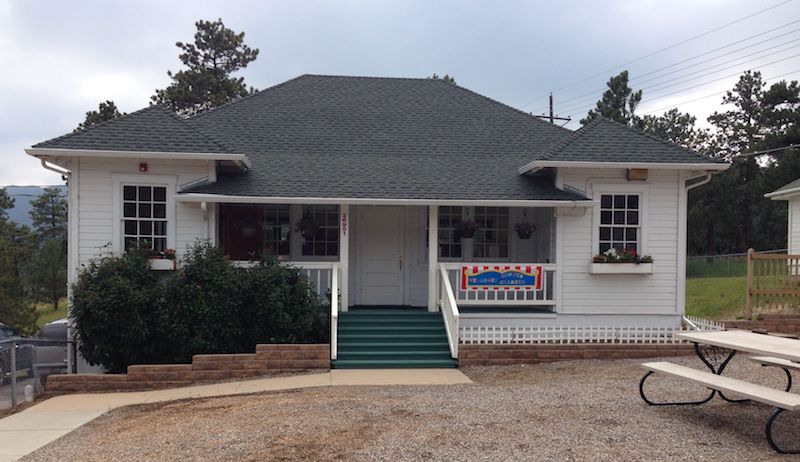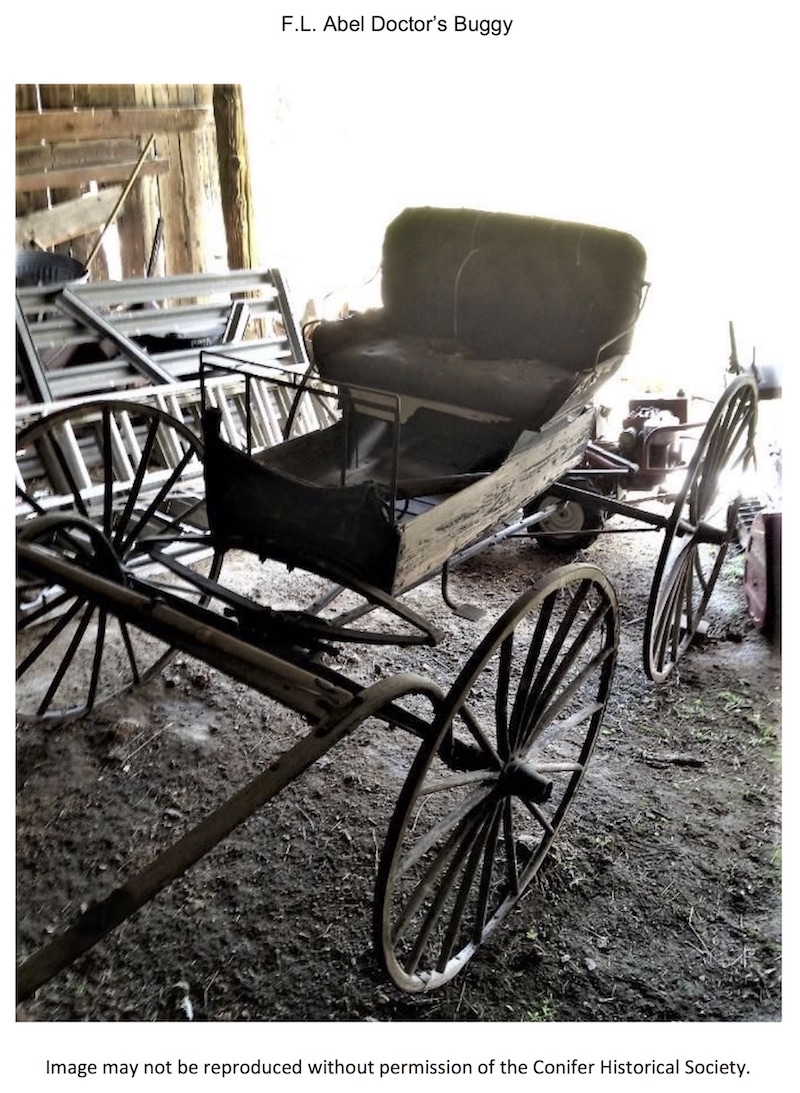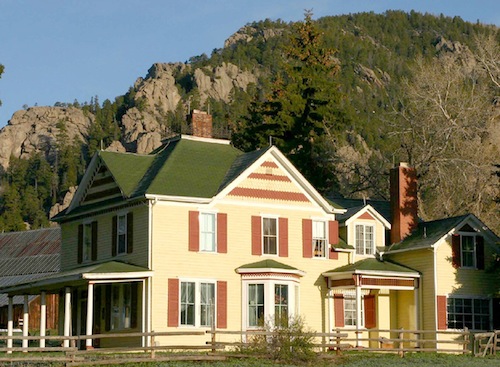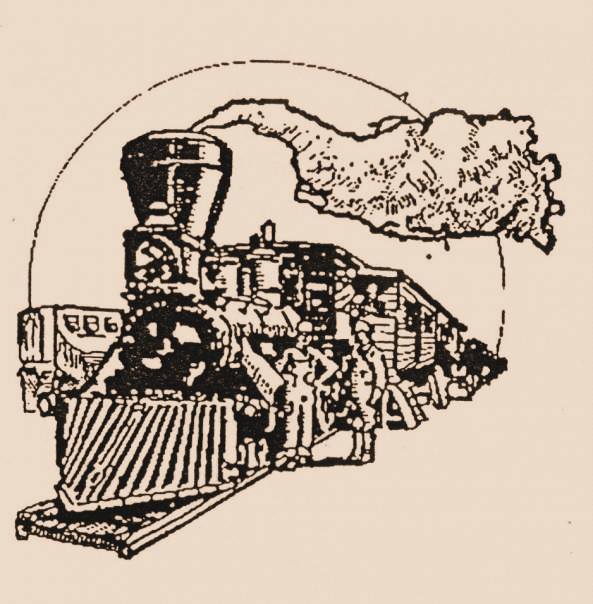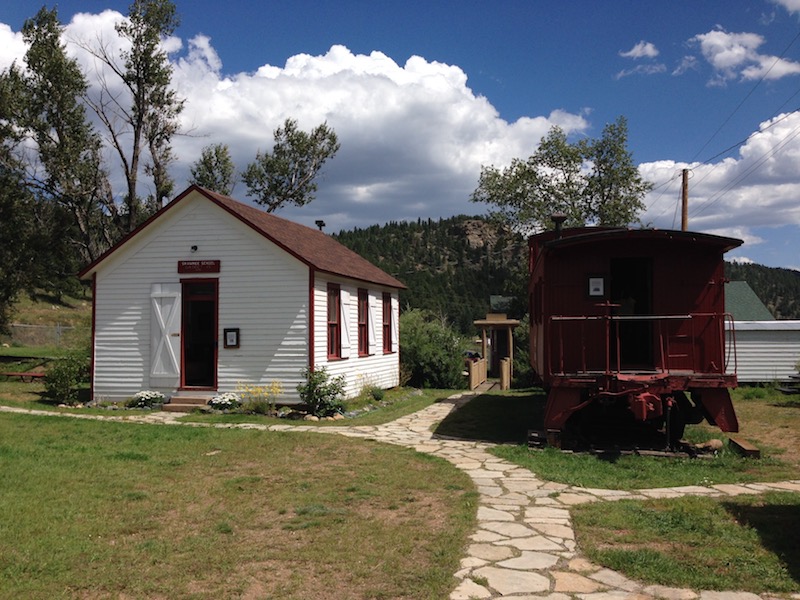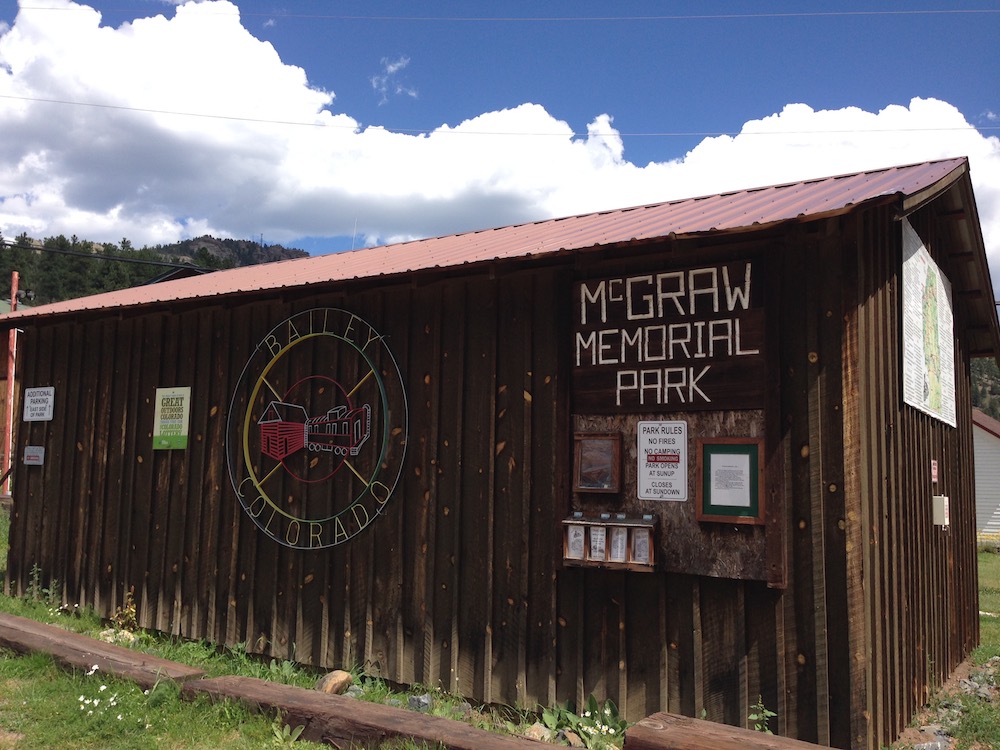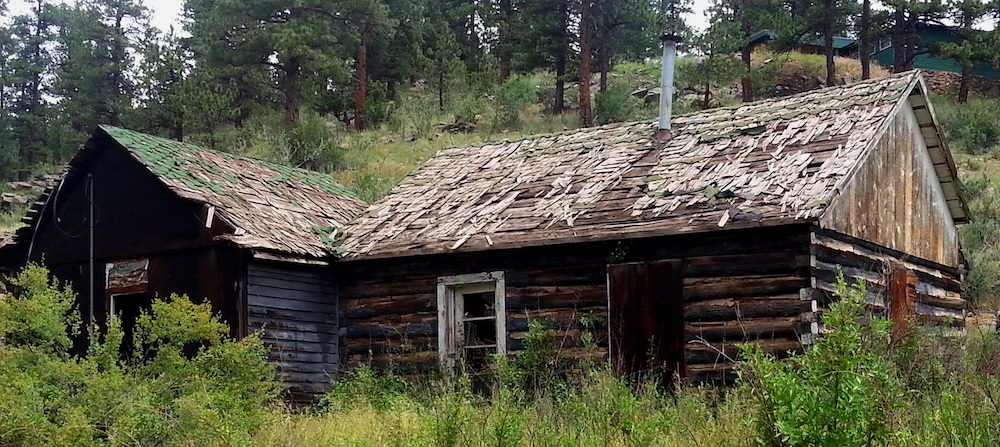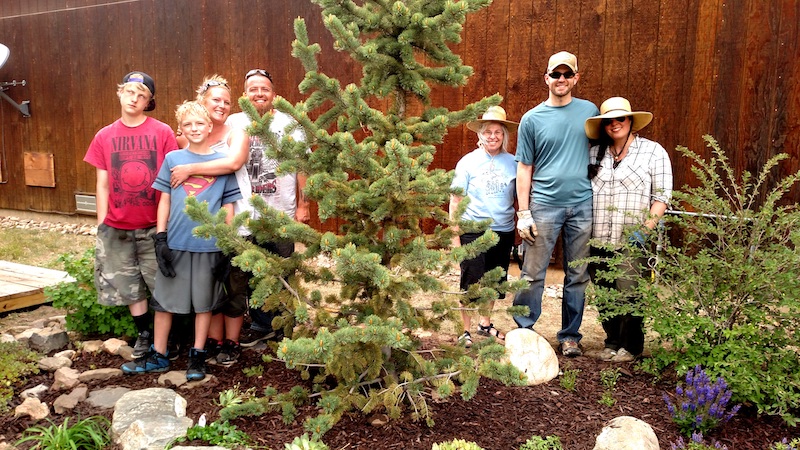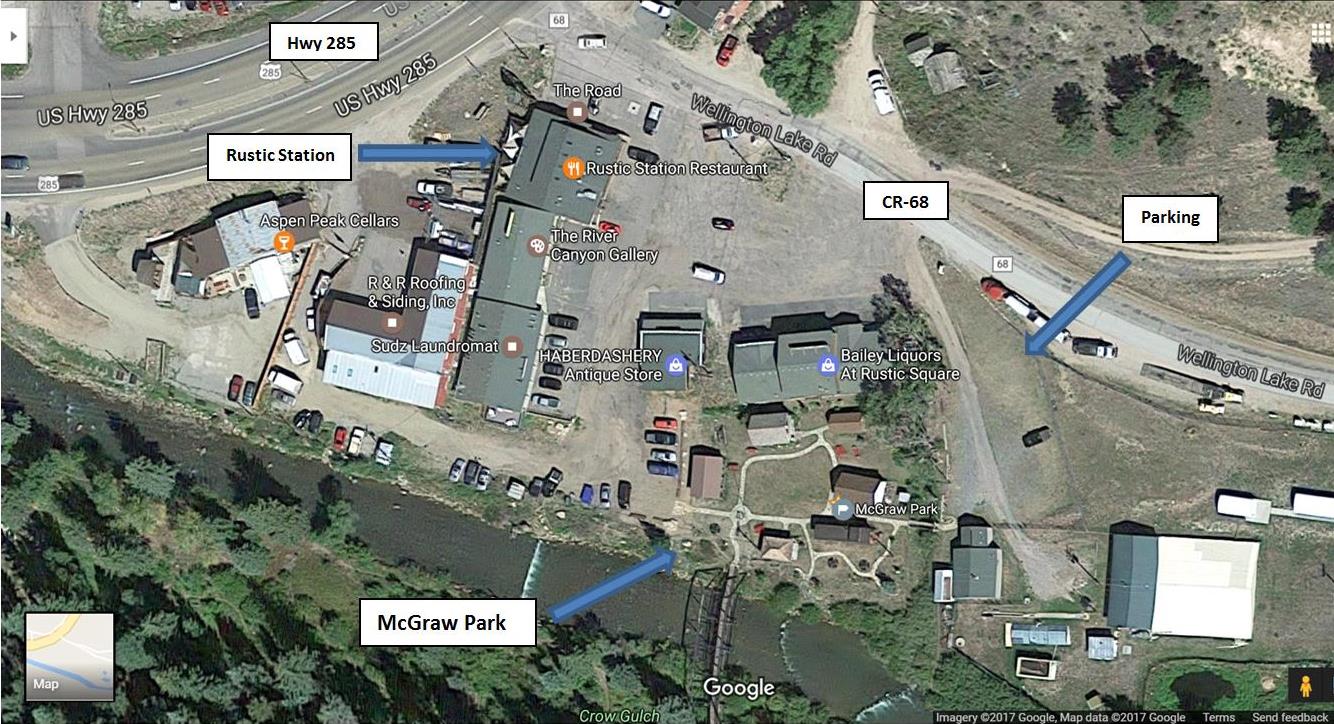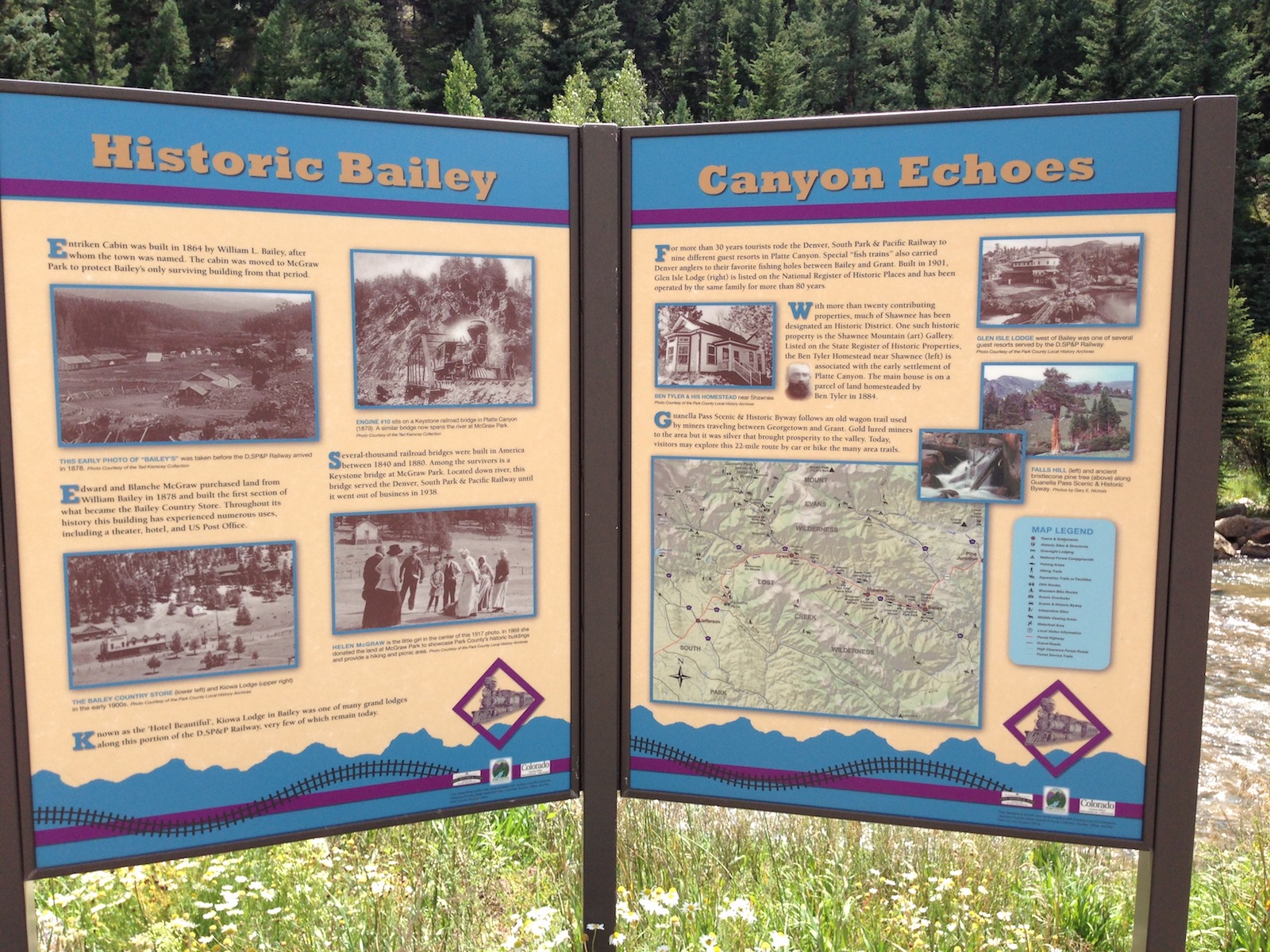Sharon Montgomery
The Rich History of the 285 Corridor
It can be hard to imagine life along the 285 corridor before cars, shopping centers, restaurants, and businesses, but this was the landscape of the area as little as 100 years ago. The pioneers of Conifer, Pine, and Bailey are the founders of these beautiful places where we reside and run our businesses. Those brave souls faced the harsh Colorado winters without snow plows and 4WD vehicles. They braved the elements (and wildlife) before indoor plumbing. They farmed the land and spent a day and a half in their wagons to take crops to The Brown Palace in Downtown Denver for sale. They built the railroad that opened commerce to the Bailey area and beyond. And they are the ones who laid the cobblestones of the towns we love.
From the collection of the Littleton Museum. May not be reproduced in any form without permission of the Littleton Museum.
Today, we are fortunate to have the ancestors of these strong and resilient pioneers give us the stories and memories of their family members. With careful preservation, those stories continue to be passed down long after they have departed. A sense of community brought the pioneers of the corridor together, just the same as it does today.
It's this story of friendship that opened the door of history for me.
These friends forged the rugged terrain of the Colorado mountains and started the foundation of the community we know and love today. The Entriken cabin was one of the original buildings in Bailey and was on the property of William and Ann Bailey. The Barnett's came to town a few years later and Joe started the school in the area. They tried to hire a teacher to come to Bailey, but did not have any success, so Joe became the teacher. These two families are the ones who gave settlers a place to come to without having to forge a life completely on their own. They offered community and friendship to those around them and were the beating heart of a growing body of people.
The Denver Post newspaper wrote an article in 1919 that talks about the friendship and community of Elizabeth Entriken and Joseph and Sarah Barnett. These three were the oldest settlers in the Bailey area and had spent 36 years together, living right down the street from one another. After years of living in the wild terrain of Colorado, the Barnett's headed to Missouri. The article describes the moment the Joe and Sarah stepped onto the platform of the train and said goodbye to their dear friend.
"There was a cheer and scores of waving hands fluttered in the sunshine. Standing on the last coach the little old gentleman waved his hand and the two quavering voices spoke:
'Goodbye Lizzie.'
'Goodbye Joe.'
Bailey isn't the same now."
We have all had moments in our lives where we have had to part ways from a friend due to relocation, but have instant communication avenues such as email and social media to make it seem as though there is no physical distance between us. Saying goodbye to a friend in 1919 was truly saying farewell, especially at the ages of 85 and 91.
These personal stories need to be preserved for future generations. This article written in 1919 speaks of the very heart of the budding community. Just over 100 years out, this tale is a wonder to me. It makes me ponder just how hard the pioneer life was in the mountains. I have personally known the inconvenience that a heavy snowfall can bring, just the same as any of us in the community, but we have the advantage of snowplows and ice melt to help us through - the conveniences of modern life. The stories need to be told so that we remember where we came from. These are the tales that are just as important as the ones our grandmothers tell us about our families' history - these memories are our roots.
There are two Historical societies who help make sure these legacies are available for future generations – to ensure these voices are heard for hundred of years to come. The Conifer Historical Society and the Park County Historical Society work to maintain these memories, collect artifacts from history for preservation and education, and to educate residents and visitors alike.
The Conifer Historical Society
The mission of the Conifer Historical Society is to "Share the region's legacy by collecting, preserving, and exhibiting historical and cultural materials", according to their website. This volunteer organization works tirelessly to gather information and history of the Conifer area. The society was founded by This email address is being protected from spambots. You need JavaScript enabled to view it. and I was able to interview her recently. The Conifer Historical Society has offered programs and exhibits since 2007. Over the years, they have been able to gather some great pieces of the local history.
I learned from speaking with Suzi how the historical society was formed. "I was fascinated by the people who came to Conifer when nothing was there," Suzi said. "There were no roads. It was an Ute Indian trail, and that's what South Turkey Creek is now. That was a migration trail and that's how the pioneers came." It was this fascination with the original migrants to Conifer and the stories overheard at the Pleasant Park Grange while she volunteered, that moved her to create the historical society. Conifer didn't have a local place to showcase the rich history, and until 2007, this information was stored in Denver or Evergreen. This is an organization that was truly created from a heart who loves this area and how it got started. If you ever get the chance to speak with Suzi, I would highly recommend it! I promise you will learn something and the stories she shares will give you a new appreciation of what a cold, hard, Colorado winter in Conifer was like back in the day.
An important structure in our historical journey that I learned about during my interview is The Little White Schoolhouse which was deeded to the historical society in 2012 and placed on the National Registry of Historic Places in 2014. This one-room schoolhouse was built in 1922 and functioned as the local school until the 1950s. After West Jefferson Elementary opened in 1955, the school house was used as an overflow classroom and was eventually turned into the preschool until it was retired in 2012. The school is located off Barkley Road and offers tours by appointment.
Currently, the historical society is working on collecting photographs, maps, letters, and other items that are prey to disintegration over time. In the past, photos and archived items have had to be purchased for use from the Denver Public Library, History Colorado, and the Evergreen Historical Society, now known as the Jefferson County Historical Society. This project will allow for the preservation and use of local photos without the cost of purchase. In addition to this Ephemera Collection Project, they are also going to be painting the school house over the summer.
Another exciting project the society is currently working on is restoring a doctor's buggy that belonged to Norm Meyer's father. The buggy is in a state of disarray currently, but they have all the parts they need to bring it back to its former glory!
The Meyer family came to the Conifer area in the 1950s and owned the iconic yellow house that greets visitors in Aspen Park from 285. The house and the family lands are now owned by Jefferson County Open Space. Norm was known for his dedication to the Conifer area, was a highly-regarded pilot for Continental Airlines, and his personal runway at the Meyer property. Each year, the Conifer Area Chamber of Commerce awards a community member the Norman F. Meyer Award to honor their dedication to the community.
Video of Norm Meyer, Sr being named the inaugural recipient of the Conifer Area Chamber of Commerce's 2012 Norman F. Meyer Award for Service to the Community. Video by My Mountain Town.
Volunteering and community involvement are an important part of our society. There are many ways that you can get involved. If you have historic photos, you can share or donate those. They will accept scans of the originals and if you need them to, they will bring a scanner to you.
There are many programs throughout the year and they would love for the community to be involved! The painting project has various needs including scraping old paint, donating money for new paint, and people to bring food for other volunteers. Be sure to join their mailing list to receive event announcements.
Park County Historical Society
In Park County, efforts to preserve the County's historical artifacts are underway as well. The mission of the Park County Historical Society (PCHS) is to be a "preservation organization promoting the history and the prehistory of the County through awareness and education for the citizens of Park County. The organization is dedicated to preservation, collection and stewardship through cooperation and communication." I was able to speak with Jim Glenn, the Education & Volunteer Coordinator for PCHS and spend some time learning about all the gems they have been able to preserve over the years.
One of the things I enjoyed most in speaking with Jim was to hear the passion and love he holds for the park and especially the Entriken Cabin in the McGraw Memorial Park, a favorite highlight for guests as well. The Bailey's moved to the area in 1864 and the cabin was built for Ann's sister Elizabeth Entriken. John Dyer, Ann Bailey's brother, helped William build the cabin located on William and Ann Bailey's property. John was a local reverend in the area and is known as "The Snowshoe Itinerant" and wrote a book with that title in 1891. Jim shared, "John might be the reason that William Bailey stayed in the area because, he said, 'You're halfway from Denver to the mines, and people need a place to stay. You might make a livin' here.'" The Bailey Ranch was established shortly thereafter. This is the only surviving building from the original town of Bailey. Think about it - it's the only building that has survived fires and Colorado weather extremes in the area! The only one! Entriken is available for tours, and guests are taken back in time to see how early mountain living existed. This gem was added to the State Register of Historic Properties in 1992. There are several other historic buildings and even a train caboose to see and photograph a piece of historic train folklore at the McGraw Memorial Park. For a virtual tour of the caboose, click here.
Shawnee School and Caboose at McGraw Park. Photo by Sharon Trilk, My Mountain Town
It was fascinating to hear the story about a geographically convenient area and why it was the start of the town of Bailey. There are so many of these stories that are kept by the historical society and retold so that we (and future generations) will have access to them.
2018 brings a lot of exciting projects. Jim is working on creating a FAQ on the Entriken cabin. Guests have a lot of questions about the items staged inside and these answers will ensure that all guests are given consistent information. Jim will be gathering all that information and putting together a guide that volunteers can use to answer questions and educate visitors.
Another project they are hoping to work on during the year is the Barnett Cabin. The cabin is located across the street from the McGraw Memorial Park behind Bailey Propane. The cabin is believed to have been built by Joe and Sarah Barnett around the 1880's or 1890's to be the school for the children. It is undecided if they will be moving the cabin to the Park or if they will preserve it where it is currently located.
There are a lot of ongoing projects happening in the park. Weeding, planting, property maintenance, building picnic tables and painting to be done on the buildings always need to be completed. Volunteers are welcome to help with various projects and tours.
The history in the 285 corridor is a rich one, filled with strong pioneers who braved unknown and wild conditions. As they tamed the area, more families moved in and it has grown into the community we know and love today. They brought the Wild, Wild West to life with the development of the railroad through Bailey. Abundant mining opportunities, and the small businesses that supported them, kept the town alive. Without the perseverance of these adventurous pioneers, the rich history of the corridor wouldn't be nearly as interesting.
The resources and history that these organizations have gathered about the area paired with the efforts of the Jefferson County Historical Society in Evergreen can help us understand what early life in the mountains was like while we honor the memories they left behind. These treasured artifacts are preserved by amazing volunteers in our community to ensure that the people who built the foundation of the corridor are never forgotten.
Want to get involved with these great organizations and help shape history? My experience was enriched in the short time I spent diving into the wealth of stories and how-to's in pioneer survival. Imagine what YOU could glean from showing up for an event or two!
Here's how:
Conifer Historical Society 2018 Calendar
Calendar of Events for 2018 (All Events are at 1PM unless noted)
10 Feb Member and Volunteer Appreciation 5:00 PM
11 Mar High Altitude Cooking
22 Apr High Altitude Gardening
21 May Local Artist Exhibit
10 Jun Culturally Modified Ute Trees (they're everywhere!)
15 July C&S Railroad
19 Aug Annual BBQ and Bluegrass
Aug-Oct Exhibit - 100th Anniversary of the Yellow Barn
15 Sep Kemp Family (Pioneer) History
21 Oct Jeffco Ghost Towns with John Steinle
18 Nov Harry Truman's Ghost
Dec Life in a Mining Town
Dec-Jan Mining in Jefferson County Exhibit
Park County Historical Society 2018 Calendar
If you are interested in getting involved with the Park County Historical Society Board of Directors please contact This email address is being protected from spambots. You need JavaScript enabled to view it.. Here is a list of the meeting dates this year:
February 23rd
March 16th
April 20th
May 18th
June 15th
July 20th
August 17th
September 21st
October 19th
November 16th
The history dinner dates and topics for the year are listed here.
April 21st – Bailey
May 19th – Bailey
July 7th – Hartsel
August 25th – Hartsel
September 15th – Bailey
October 13th – Bailey
Interview with Norm Meyer near the beginning of this video about Conifer by ColoradoTown in 2011!

